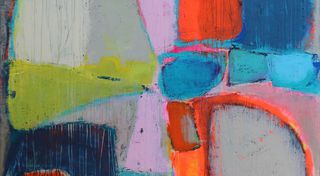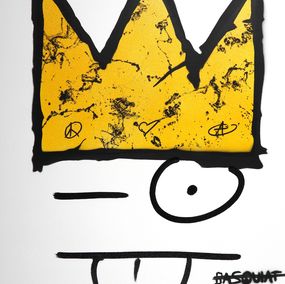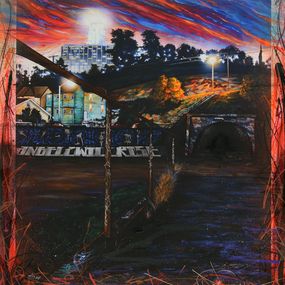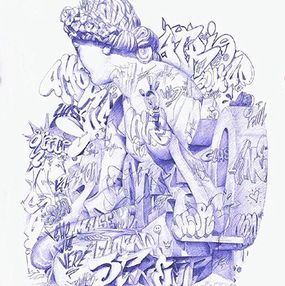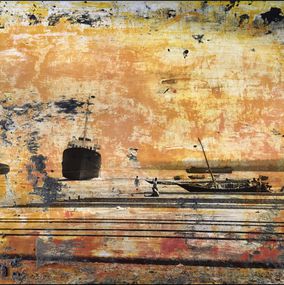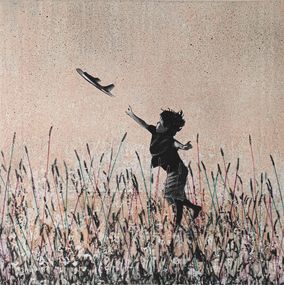
Ink Drawing for Sale
Drawing is undoubtedly one of the oldest forms of human expression, with the use of the pictograph as early as prehistoric times. If ink drawing has been present in many periods, and in a very widespread way in Asia, its forms and representations seem to diversify especially from the 19th century. Following the rise of industrial production, technical drawing (or industrial drawing) developed and was clearly distinguished from artistic drawing. In fact, it became very codified and aimed at communicating very precise information about a manufacture or a use. Thus, in the same vein, we find fashion drawings for example. Drawing also seems to be very present in the fields of design or architecture...
There are many drawing techniques: charcoal, pencil, dry or oil pastel, chalk, colored pencils... and of course ink!
For a long time reserved for writing, ink is gradually making its way into art. Diluted, mixed or pure, ink offers an almost infinite palette of nuances. A quality ink must be fluid and fix instantly on the paper. It marks the white sheet of paper by leaving a trace whose installation and drying time are relatively fast. There are several types of ink that can be used for drawing.
The best known? The Indian ink. It appeared nearly 5000 years ago, this black ink, very qualitative, brings a brilliant effect to the drawing. It became popular in Europe in the Middle Ages, where it was first used to decorate manuscript illuminations. It is also found in the Renaissance in the field of printing. From a formal artistic point of view, the great names of the time such as Albrecht Dürer, Lucas Cranach or Titian began to use it in engraving. Artists found other uses for it in the 19th and 20th centuries.
The ink of walnut, quite widespread because it can be manufactured in large quantities, is the only ink that is perfectly compatible with writing with a fine pen. More fragile to light but no less popular for decorative drawing or illustration, colored inks are composed of special pigments similar to those used in watercolors.
Probably the most famous ink artwork in the world remains "The Great Wave of Kanagawa" by the great Japanese master Hokusai: the first in the series "Thirty-six Views of Mount Fuji". Imitated but never equaled, the Wave with its light tones of white and grey-blue is a print surfing on Western and Eastern artistic influences.
Are you in love with Hokusai's poetry or simply curious to explore this unique artistic genre? Emerging and established artists are waiting for you in our selection dedicated to ink drawing: discover Éléonore Deshayes, Lali Torma or Manuel Santelices! Don't wait any longer to look for the rare gem...
Save your search and find it in your favorites
Save your search to find it quickly
Saved search
Your search is accessible from the favorites tab > My favorite searches
Unsaved search
A problem occurred

Kirill Postovit
Fine Art Drawings - 50 x 71 x 0.1 cm Fine Art Drawings - 19.7 x 28 x 0 inch
$1,840 $920

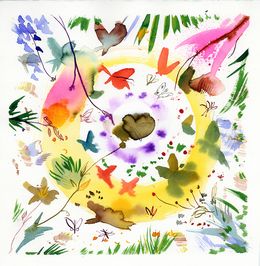
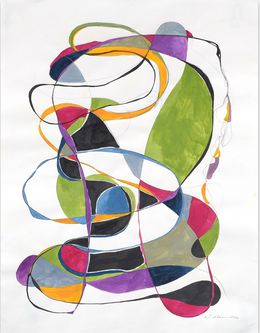
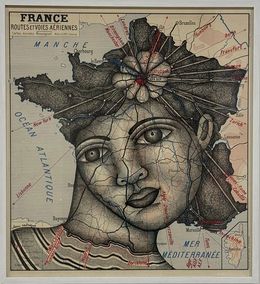
Clara Castagné
Fine Art Drawings - 85 x 80 x 1.5 cm Fine Art Drawings - 33.5 x 31.5 x 0.6 inch
$3,925

Pauline Di Valentin
Fine Art Drawings - 70 x 50 x 0.1 cm Fine Art Drawings - 27.6 x 19.7 x 0 inch
$1,840

Francesco Marino Di Teana
Fine Art Drawings - 23 x 30 x 2 cm Fine Art Drawings - 9.1 x 11.8 x 0.8 inch
$2,453
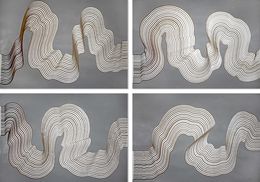
Sumit Mehndiratta
Fine Art Drawings - 42 x 60 x 0.1 cm Fine Art Drawings - 16.5 x 23.6 x 0 inch
$1,472
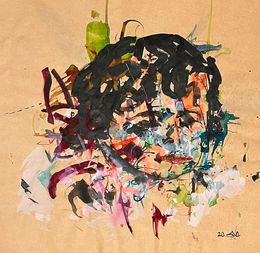


Manuel Santelices
Fine Art Drawings - 30.5 x 22.9 x 0.3 cm Fine Art Drawings - 12 x 9 x 0.1 inch
$1,200


Pierre Alechinsky
Fine Art Drawings - 40 x 50 x 1 cm Fine Art Drawings - 15.7 x 19.7 x 0.4 inch
$2,073
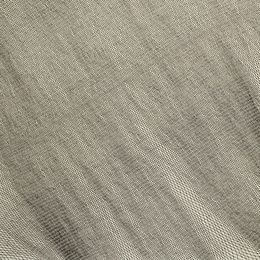
Jiratchaya Pripwai
Fine Art Drawings - 50 x 50 x 1 cm Fine Art Drawings - 19.7 x 19.7 x 0.4 inch
$1,594
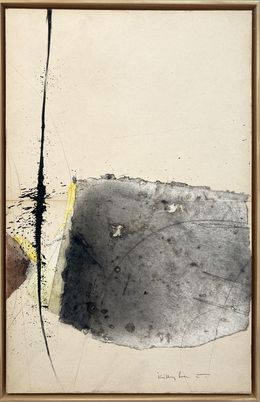
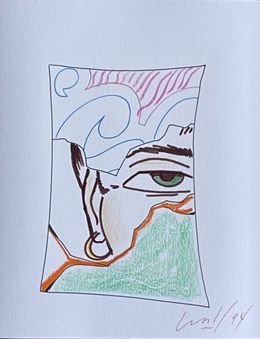
John Matos Crash
Fine Art Drawings - 24 x 16 x 0.05 cm Fine Art Drawings - 9.4 x 6.3 x 0 inch
$1,165

Anastacia Kevich
Fine Art Drawings - 50 x 50 x 0.1 cm Fine Art Drawings - 19.7 x 19.7 x 0 inch
$1,500



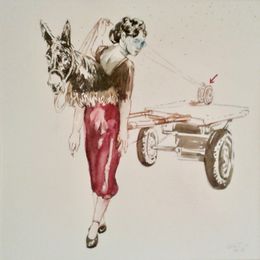


Tamar Darchiashvili
Fine Art Drawings - 86 x 61 x 0.1 cm Fine Art Drawings - 33.9 x 24 x 0 inch
$1,177

Christophe Hohler
Fine Art Drawings - 76 x 56 x 0.1 cm Fine Art Drawings - 29.9 x 22 x 0 inch
$2,392

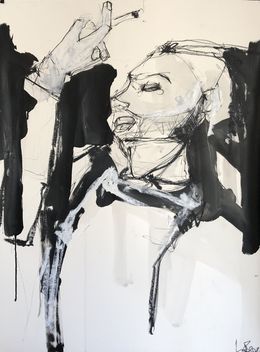
Laurent Anastay-Ponsolle
Fine Art Drawings - 76 x 56 x 0.1 cm Fine Art Drawings - 29.9 x 22 x 0 inch
$1,165




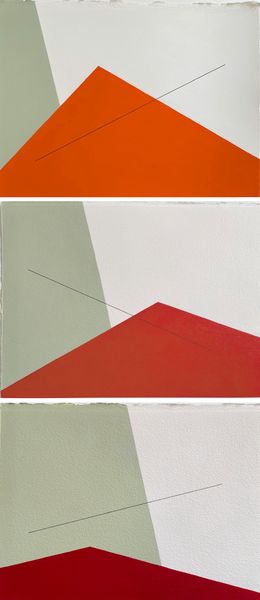
Neerja Chandna Peters
Fine Art Drawings - 83.8 x 37.8 x 0.3 cm Fine Art Drawings - 33 x 14.9 x 0.1 inch
$1,200

Salvador Dali
Fine Art Drawings - 15.5 x 9.5 x 0.2 cm Fine Art Drawings - 6.1 x 3.7 x 0.1 inch
$100,573
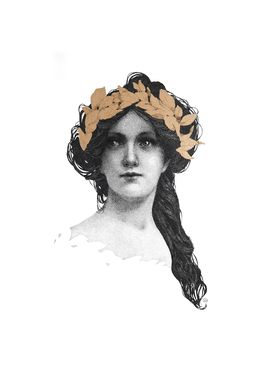
Iana Cherepansky
Fine Art Drawings - 26 x 18 x 0.1 cm Fine Art Drawings - 10.2 x 7.1 x 0 inch
$1,000

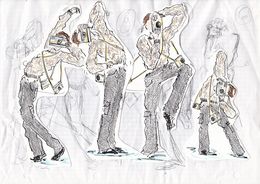


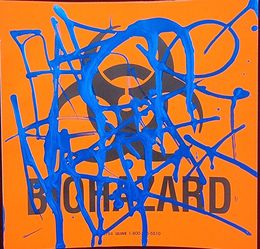
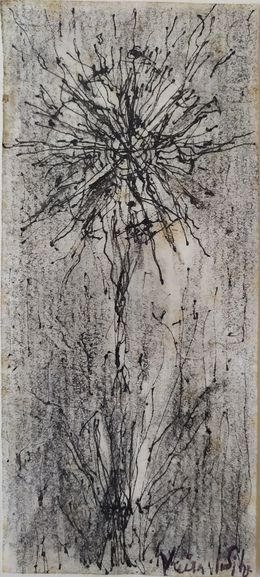
Maria Helena Vieira da Silva
Fine Art Drawings - 14.3 x 6 x 0.02 cm Fine Art Drawings - 5.6 x 2.4 x 0 inch
$13,737


Christos Kalfas
Fine Art Drawings - 67 x 103 x 1 cm Fine Art Drawings - 26.4 x 40.6 x 0.4 inch
$3,066
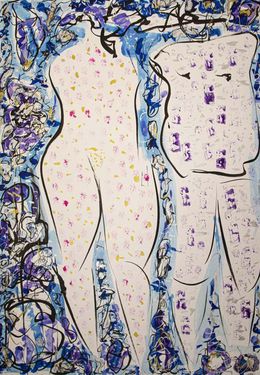
Maurizio Gracceva
Fine Art Drawings - 103 x 72 x 0.1 cm Fine Art Drawings - 40.6 x 28.3 x 0 inch
$1,840



Paloma Castello
Fine Art Drawings - 41.9 x 58.9 x 0.3 cm Fine Art Drawings - 16.5 x 23.2 x 0.1 inch
$1,000
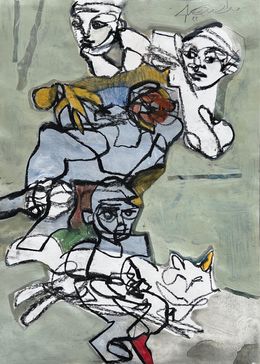
Mansour El Habre
Fine Art Drawings - 42 x 30 x 1 cm Fine Art Drawings - 16.5 x 11.8 x 0.4 inch
$2,330
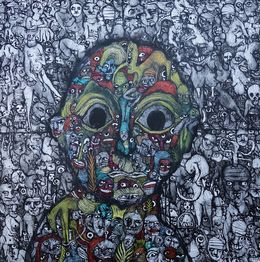
Eric Demelis
Fine Art Drawings - 80 x 80 x 3 cm Fine Art Drawings - 31.5 x 31.5 x 1.2 inch
$1,962 $1,766
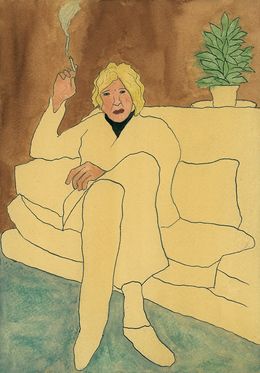


Jean-Claude Desmerges
Fine Art Drawings - 78.5 x 54.5 x 1 cm Fine Art Drawings - 30.9 x 21.5 x 0.4 inch
$3,066



Vincent Pompetti
Fine Art Drawings - 40 x 50 x 0.1 cm Fine Art Drawings - 15.7 x 19.7 x 0 inch
$1,165

Nino Devdariani
Fine Art Drawings - 34 x 43 x 0.1 cm Fine Art Drawings - 13.4 x 16.9 x 0 inch
$1,472
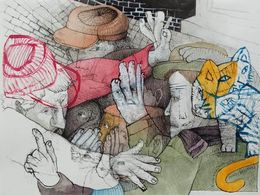

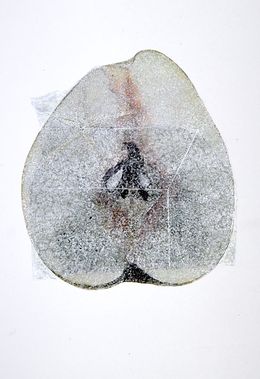

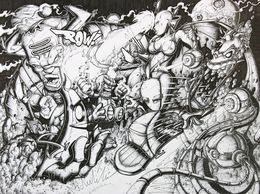




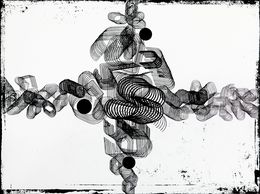

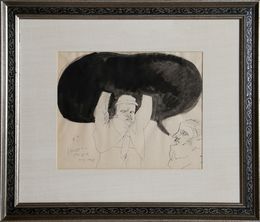

Florian Song Nguyen
Fine Art Drawings - 58.5 x 39.5 x 1 cm Fine Art Drawings - 23 x 15.6 x 0.4 inch
$2,392

Wifredo Lam
Fine Art Drawings - 21.9 x 16.9 x 0.2 cm Fine Art Drawings - 8.6 x 6.7 x 0.1 inch
$39,248

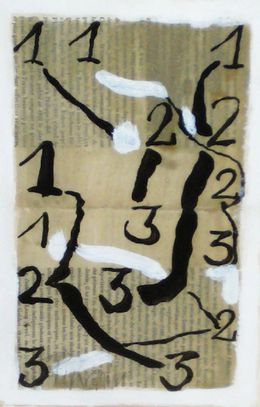
Jean-Pierre Pincemin
Fine Art Drawings - 25 x 15 x 1 cm Fine Art Drawings - 9.8 x 5.9 x 0.4 inch
$3,679
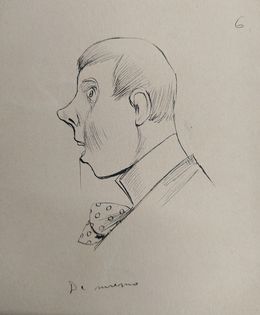

Daniel Gibson
Fine Art Drawings - 22.86 x 30.48 x 2.54 cm Fine Art Drawings - 9 x 12 x 1 inch
$9,000

Michael Alan
Fine Art Drawings - 295.9 x 58.2 x 0.1 cm Fine Art Drawings - 116.5 x 22.9 x 0.04 inch
$1,349
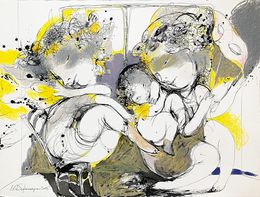

Tanner Jackson Rhines
Fine Art Drawings - 19.68 x 13.97 x 0.1 cm Fine Art Drawings - 7.7 x 5.5 x 0 inch
$429


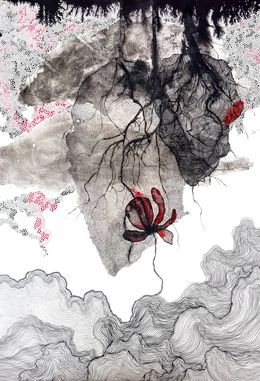
Corinne Szczepaniak
Fine Art Drawings - 51 x 36 x 0.2 cm Fine Art Drawings - 20.1 x 14.2 x 0.1 inch
$1,165 $1,049
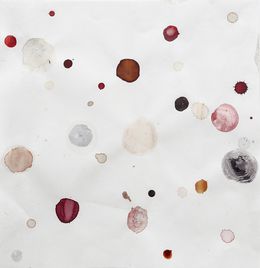
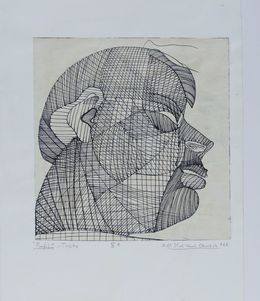
Karl-Karol Chrobok
Fine Art Drawings - 50 x 40 x 0.2 cm Fine Art Drawings - 19.7 x 15.7 x 0.1 inch
$429
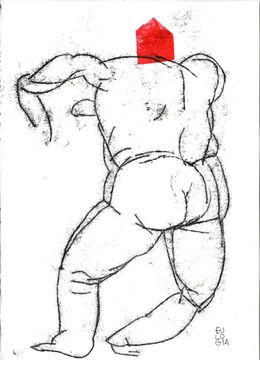

Atom Hovhanesyan
Fine Art Drawings - 45.7 x 40.6 x 0.05 cm Fine Art Drawings - 18 x 16 x 0 inch
$80,000
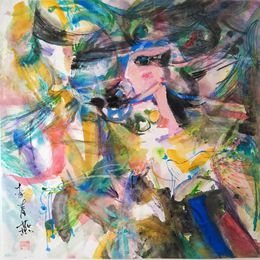
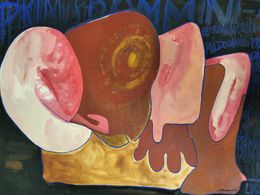
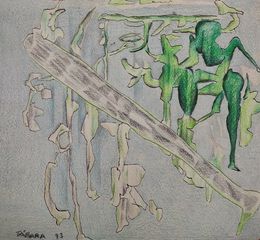
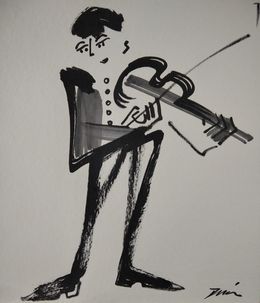



Arancha Tejedor
Fine Art Drawings - 40 x 30 x 0.5 cm Fine Art Drawings - 15.7 x 11.8 x 0.2 inch
$196

Francis Saillart / Aristall
Fine Art Drawings - 56.5 x 42 x 0.1 cm Fine Art Drawings - 22.2 x 16.5 x 0 inch
$1,043
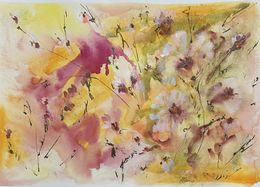
Viktoria Ganhao
Fine Art Drawings - 30 x 40 x 0.2 cm Fine Art Drawings - 11.8 x 15.7 x 0.1 inch
$258
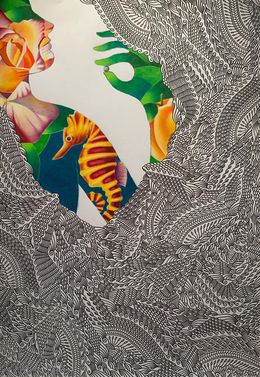
Konstantinos Papaioannou
Fine Art Drawings - 100 x 70 x 0.2 cm Fine Art Drawings - 39.4 x 27.6 x 0.1 inch
$1,594
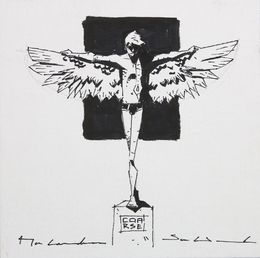
Discover the styles & movements
Discover the selection of our experts
Ink drawing is the process of applying ink to a surface using a pen, brush or other object. This method encompasses various techniques and can achieve a wide range of outcomes.
To create an ink drawing, you will need a surface such as paper, ink, and a tool to apply the ink with such as a pen or brush.
Both ink and paint are made partially of pigment, but while the pigment in ink is mixed with PVC resin and plasticizers, the pigment in paint is mixed with acrylic polymer emulsion and plasticizers.
